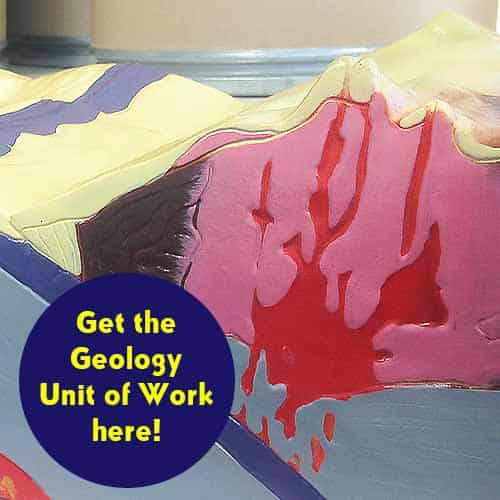You will need:
- Your fingernail (approx. Mohs Scale 2.5)
- An old 2-cent coin or copper penny (approx. Mohs Scale 3.5)
- An iron nail (approx. Mohs Scale 5.5)
- A hardened steel file (approx. Mohs Scale 7)
- Rock or metal samples eg. Granite, Marble, Iron, Zinc, etc


Go further – buy 5 x student activity sheets as extension worksheets – Moh’s Hardness of Candies!
This student science booklet has been created by experienced science educators from the Fizzics Education team.
Use these student worksheets as blackline masters for your science class!

Get the Unit of Work on Geology here!
- The Earth’s layers, the rock cycle, volcanoes, earthquakes & more!
From soil science to mineral testing, these hands-on experiments your students will discover the importance of natural resources and the role of plate tectonics in shaping our world.
Includes cross-curricular teaching ideas, student quizzes, a sample marking rubric, scope & sequences & more

School science visits since 2004!
– Curriculum-linked & award-winning incursions.
– Over 40 primary & high school programs to choose from.
– Designed by experienced educators.
– Over 2 million students reached.
– Face to face incursions & online programs available.
– Early learning centre visits too!
Why Does This Happen?
Rocks differ in hardness, due to the different compounds that make up the rock.
In 1822 an Austrian geologist, Frederick Mohs, devised a scale that ranked different mineral samples for their hardness, therefore standardising the field tests done by miners across the world.
Mohs chose the following samples as standards due to their abundance and different hardness.
1 = Talc, 2 = Gypsum, 3 = Calcite, 4 = Fluorite, 5 = Apatite, 6 = Orthoclase, 7 = Quartz
8 = Topaz, 9 = Corundum, 10 = Diamond.
By having a standard scale, prospectors can more easily classify the materials they find.
From the rock cycle to volcano formation, we’ve got your geology unit covered!
Get in touch with FizzicsEd to find out how we can work with your class.
Geology Rocks!
Years 1 to 6
Maximum 30 students
School workshop (NSW & VIC)
60 or 90 minutes
Online Class Available
Geology Rocks!
Years 7 to 10
Maximum 30 students
Science Workshop (NSW & VIC only)
60 minutes
Online Class Available
STEM Full Day Accelerator - Primary
Designed from real classroom experiences, this modular day helps you create consistently effective science learning that directly address the new curriculum with easily accessible and cost-effective materials.






























Comments